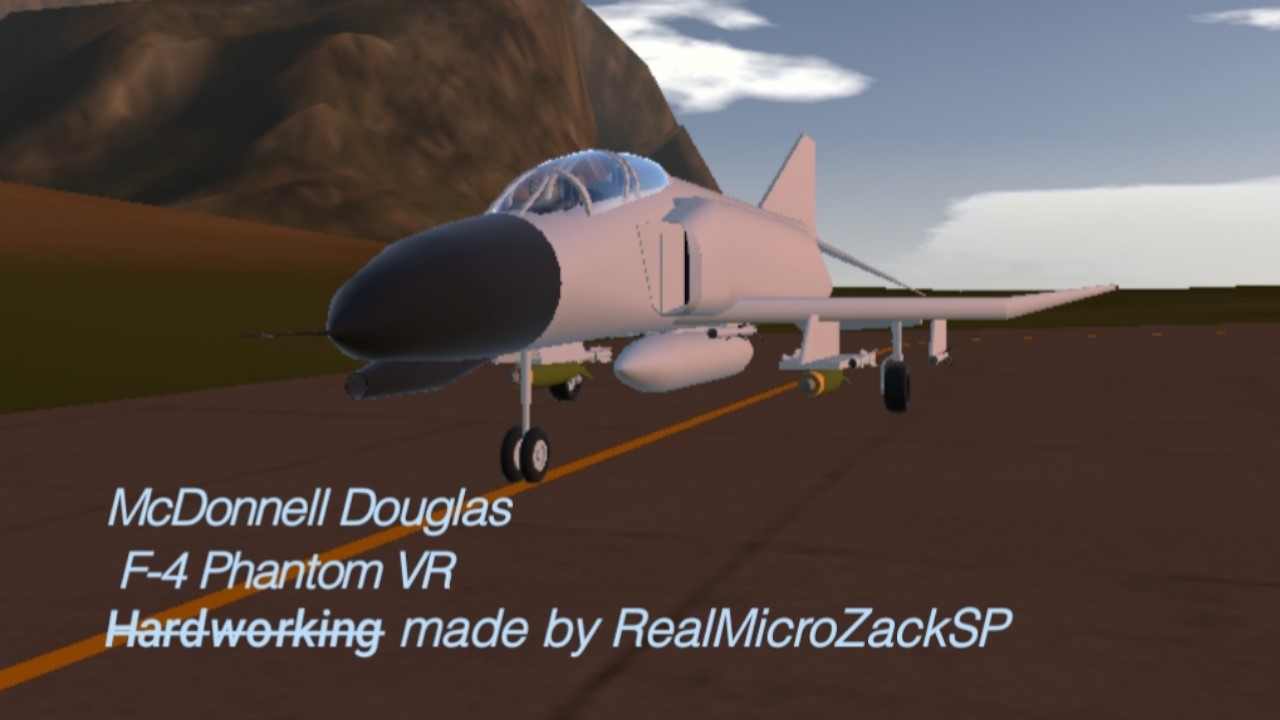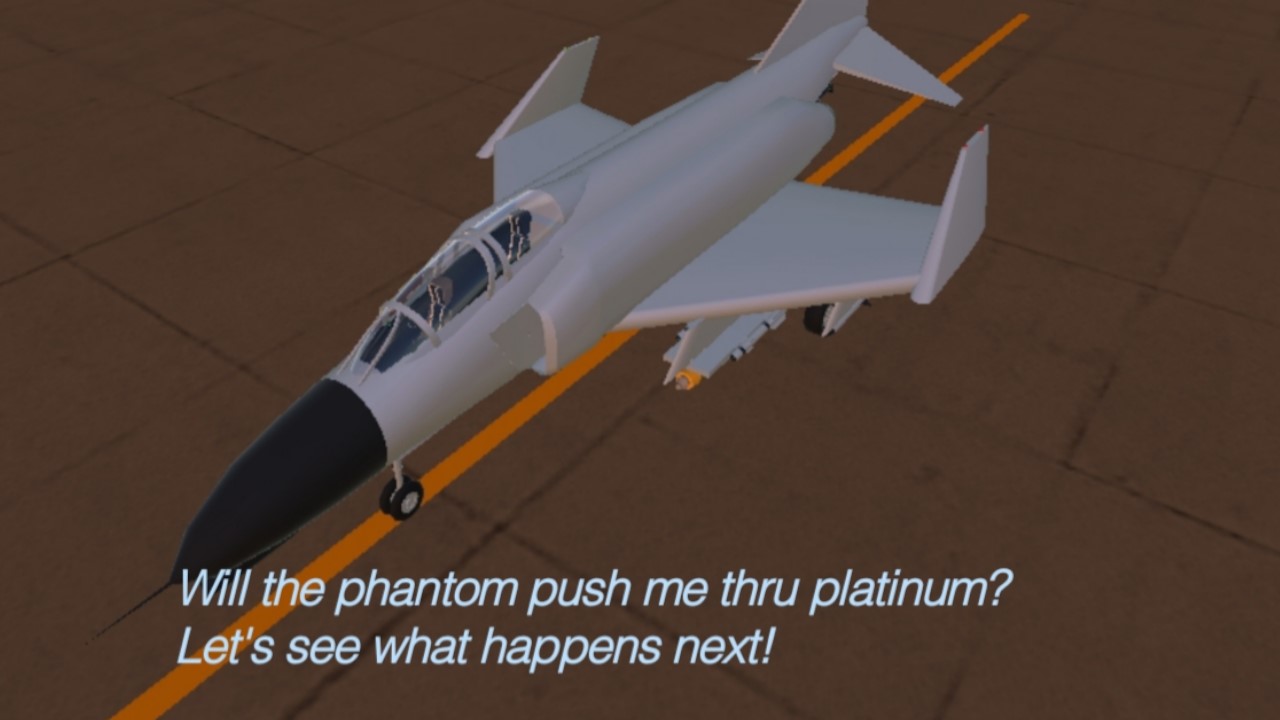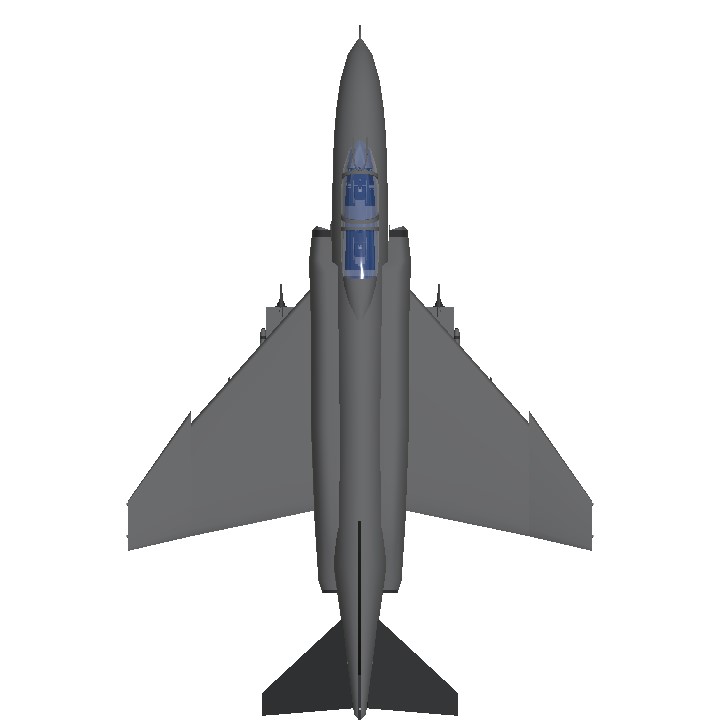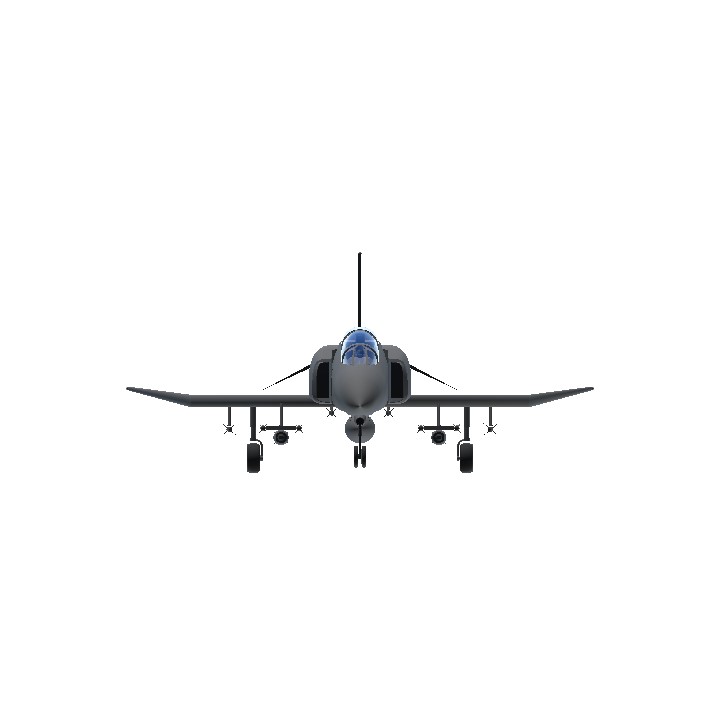I don't care if they hate me, as long as I reached the platinum!
Activation Groups
AG1 = Arresting Hook
AG2 = Lights
AG3 = Parachute
AG4 = Fold Wings
AG5 = Drop Fuel Tank
AG6 = Drop All Weapons
The Rest = N/A
McDonnell Douglas F-4 Phantom II: Comprehensive Overview, Specifications, and Armament
The McDonnell Douglas F-4 Phantom II stands as one of the most iconic and versatile fighter aircraft in aviation history. Renowned for its performance, adaptability, and extensive service across multiple air forces worldwide, the F-4 Phantom II has left an indelible mark on military aviation from its inception in the 1950s through its continued use in various roles today.
Table of Contents
- Activation Groups
- Introduction and Overview
- Development History
- Variants and Models
- Technical Specifications
- General Characteristics
- Performance
- Powerplant
- Avionics and Systems
- Armament
- Air-to-Air Weapons
- Air-to-Ground Weapons
- Guns
- Additional Payloads and Equipment
- Operational History
- Legacy and Impact
- Conclusion
Introduction and Overview
The F-4 Phantom II, initially developed by McDonnell Aircraft (later McDonnell Douglas, and now part of Boeing), is a tandem two-seat, twin-engine, all-weather, long-range supersonic jet interceptor and fighter-bomber. Designed to serve both as a fighter and a ground-attack aircraft, the F-4 Phantom II was introduced in the 1960s and became a cornerstone of the U.S. military's aerial capabilities during the Vietnam War and beyond.
Key attributes of the F-4 Phantom II include:
- Multi-role Capability: Capable of performing air superiority, interdiction, close air support, and reconnaissance missions.
- Advanced Avionics: Incorporation of radar and electronic systems that were cutting-edge at the time.
- Extensive Armament: Equipped to carry a wide variety of weapons for diverse mission profiles.
- Durability and Reliability: Proven performance in various combat theaters and environments.
Development History
Origins and Design Goals
The F-4 Phantom II was developed in response to the United States Navy's requirement for a new carrier-based interceptor in the late 1950s. The design goals emphasized high speed, excellent maneuverability, and the ability to carry a substantial payload of weapons. Recognizing the need for a versatile aircraft that could fulfill multiple roles across different branches of the U.S. military, the F-4 Phantom II was designed to serve both the Navy and the U.S. Air Force.
Design and Prototyping
- First Flight: May 27, 1958
- Introduction: Entered service in 1960 with the U.S. Navy and later with the U.S. Air Force in 1962.
The F-4 Phantom II featured several innovative design elements, including:
- Twin Engines: Two General Electric J79 turbojet engines providing substantial thrust.
- All-Metal Construction: Primarily aluminum alloy, contributing to the aircraft's durability.
- Tandem Seating: Two-seat configuration in some variants for roles requiring a pilot and a radar intercept officer or weapons systems officer.
Production and Deployment
Over 5,195 units of various F-4 variants were produced, serving not only in the U.S. military but also in the air forces of 11 other nations, including the United Kingdom, Germany, Japan, and Australia.
Variants and Models
The F-4 Phantom II was produced in numerous variants to fulfill different operational requirements. Below are the primary variants:
U.S. Navy and Marine Corps Variants
- F-4B: Two-seat fighter variant for the U.S. Navy.
- F-4J: Improved version with enhanced radar and avionics.
- F-4N: Upgraded F-4B with modern electronics.
- F-4S: Final variant for the U.S. Navy with increased fuel capacity and updated systems.
U.S. Air Force Variants
- F-4C: Single-seat fighter variant for the U.S. Air Force.
- F-4D: Two-seat version with improved avionics.
- F-4E: Enhanced version featuring an internal M61 Vulcan cannon, improved radar, and upgraded electronics.
Reconnaissance Variants
- RF-4B/C/D/E: Photo-reconnaissance versions equipped with cameras and sensor suites for intelligence gathering.
Export Variants
- F-4M: Upgraded F-4s for the German Air Force.
- F-4S: Export version for the Royal Australian Air Force.
- F-4K/Phantom FG.1: Royal Navy's carrier-based variant with British avionics and modifications.
Specialized Variants
- EF-4: Electronic warfare and reconnaissance roles.
- F-4G Wild Weasel: Designed for suppression of enemy air defenses (SEAD) missions.
Technical Specifications
General Characteristics
| Specification | Details |
|----------------------------|------------------------------------------|
| Crew | 1 (F-4C/E) or 2 (F-4B/D/J) |
| Length | ~19.2 meters (63 ft) |
| Wingspan | ~11.4 meters (37.5 ft) |
| Height | ~5.9 meters (19.3 ft) |
| Wing Area | ~46.3 m² (498 ft²) |
| Empty Weight | ~20,000 kg (44,092 lb) |
| Max Takeoff Weight | ~29,000 kg (63,934 lb) |
Performance
| Specification | Details |
|----------------------------|------------------------------------------|
| Maximum Speed | Mach 2.23 (2,430 km/h, 1,510 mph) |
| Combat Radius | ~1,600 km (1,000 mi) |
| Range | ~4,220 km (2,620 mi) with external tanks |
| Service Ceiling | ~15,240 meters (50,000 ft) |
| Rate of Climb | ~ 254 m/s (50,000 ft/min) |
Powerplant
- Engines: 2 × General Electric J79-GE-17A turbojet engines
- Thrust: Approximately 16,900 lbf (75.3 kN) each with afterburner
Avionics and Systems
The F-4 Phantom II was equipped with a suite of advanced avionics for its time, including:
- Radar: Initially the AN/APQ-72 or AN/APQ-120 in early variants; later models featured the AN/AWG-11 radar.
- Navigation Systems: Inertial navigation systems, Doppler radar, and ground mapping radar.
- Electronic Warfare: Electronic countermeasures (ECM) systems in later variants.
- Fire Control: Advanced missile guidance and targeting systems, especially in SEAD variants.
Armament
The F-4 Phantom II's armament was one of its most versatile features, allowing it to perform a wide range of mission profiles. The aircraft was designed to carry both air-to-air and air-to-ground weapons, along with an internal cannon in certain variants.
Air-to-Air Weapons
Missiles
AIM-7 Sparrow: Semi-active radar-guided medium-range missile.
- Launchers: Typically mounted under the wings or in internal bays.
- Warhead: High-explosive.
AIM-9 Sidewinder: Infrared homing short-range missile.
- Mounting: Side-mounted pylons, enabling rapid access for dogfighting.
AIM-120 AMRAAM: Active radar-guided beyond-visual-range missile (in some upgraded variants).
Rocket Pods
- Hydra 70: 2.75-inch (70 mm) unguided rockets for close air support and ground attack roles.
Air-to-Ground Weapons
Bombs
- Mk 82/83/84 General-Purpose Bombs: Various weight classes for versatility in targeting.
- BLU-26/B: Incendiary bombs for target suppression.
Guided Munitions
- AGM-65 Maverick: Air-to-surface missile designed for precision strikes against armored vehicles and fortifications.
- AGM-12 Bullpup: Laser-guided missile for precision targeting.
Cluster Munitions
- CBU-24 and CBU-58: Cluster bomb units containing multiple bomblets for area denial.
Fuel-Air Explosives
- GBU-10 Paveway II: Laser-guided bomb with enhanced destructive capabilities.
Guns
- Internal M61 Vulcan Cannon
- Caliber: 20 mm
- Rounds: 100–200 linked rounds.
- Mounting: Located internally between the cockpit and the radar system in the F-4E variant.
- Function: Provided a reliable means of close-range engagement and strafing.
Additional Payloads and Equipment
External Hardpoints
- Wing Mounts: Typically 9 under-wing pylons (three under each wing on each side) for carrying a mix of weapons and external fuel tanks.
- Fuselage Stations: Additional mounting points for bombs, missiles, or reconnaissance pods.
Drop Tanks
- Purpose: Extended range and endurance for long missions.
- Capacity: Varies, but commonly around 1,360 liters (360 gallons) per tank.
Fuel Tanks
- Internal and External: Allow for flexible mission planning with varying payloads.
Specialized Pods
- Reconnaissance Pods: Equipped with cameras and sensors for intelligence missions.
- Electronic Warfare Pods: Enhance the aircraft's ability to conduct SEAD missions by jamming enemy radar and communications.
Operational History
The F-4 Phantom II has seen extensive service across multiple conflicts and theaters:
Vietnam War: Served as a primary air superiority and ground attack platform for both the U.S. Navy and Air Force. The F-4E variant introduced significant improvements, including an internal cannon to address dogfighting shortcomings observed during early deployments.
Middle East Conflicts: Participated in various operations, including the Yom Kippur War, the Iran-Iraq War, and conflicts involving Israel, where it proved its versatility in both air-to-air and air-to-ground roles.
Cold War: Acted as a deterrent and tactical asset in NATO forces across Europe, capable of countering Soviet aircraft and engaging in strategic bombing missions if necessary.
Post-Cold War: Continued to serve in specialized roles, such as the F-4G Wild Weasel for SEAD missions, until phased out in favor of more modern aircraft.
Export and International Service: Remained in service with various air forces around the world, with some units still operational in limited roles or as trainers.
Legacy and Impact
The F-4 Phantom II's design and operational flexibility have influenced the development of subsequent fighter aircraft. Its ability to adapt to multiple roles, extensive use in various combat scenarios, and robust performance have cemented its status as a legendary aircraft. The F-4's legacy is evident in modern multi-role fighters, which continue to embody the versatility and capability that the Phantom II exemplified.
Conclusion
The McDonnell Douglas F-4 Phantom II remains a testament to innovative aircraft design and multi-role versatility. Its extensive service record, diverse variants, and formidable armament made it a cornerstone of military aviation for decades. The F-4 Phantom II not only served effectively in numerous conflicts but also paved the way for future generations of fighter aircraft, ensuring its place in the annals of aviation history.
Specifications
Spotlights
- This craft is curated
- tetozz one year ago
General Characteristics
- Created On Android
- Wingspan 50.6ft (15.4m)
- Length 77.8ft (23.7m)
- Height 23.3ft (7.1m)
- Empty Weight 25,610lbs (11,616kg)
- Loaded Weight 51,538lbs (23,377kg)
Performance
- Power/Weight Ratio 3.401
- Wing Loading 65.2lbs/ft2 (318.2kg/m2)
- Wing Area 790.9ft2 (73.5m2)
- Drag Points 9799
Parts
- Number of Parts 225
- Control Surfaces 5
- Performance Cost 1,117






No grav?
Wtf no curated no fair
@Pnut
Some folks are born made to wave the flag
Hoo, they're red, white and blue
And when the band plays "Hail to the chief"
Ooh, they point the cannon at you, Lord
It ain't me, it ain't me
I ain't no senator's son, son
It ain't me, it ain't me
I ain't no furtunate one, no
Some folks are born silver spoon in hand
Lord, don't they help themselves, Lord?
But when the taxman come to the door
Lord, the house lookin' like a rummage sale, yeah
It ain't me, it ain't me
I ain't no millionaire's son, no, no
It ain't me, it ain't me
I ain't no fortunate one, no
Yeah-yeah, some folks inherit star-spangled eyes
Hoo, they send you down to war, Lord
And when you ask 'em, "How much should we give?"
Hoo, they only answer, "More, more, more, more"
It ain't me, it ain't me
I ain't no military son, son, Lord
It ain't me, it ain't me
I ain't no fortunate one, one
It ain't me, it ain't me
I ain't no fortunate one, no, no, no
It ain't me, it ain't me
I ain't no fortunate son, no, no, no
It ain't me, it ain't me...
"Fortunate son" Started to play
@RealMicroZackSP no problem
I was surprised it looks very good
@cyon hehe, thanks
Nice looking F-4!
You definitely cooked on this one
Hud that I putin my build made by @planarialab
0: @winswings
1: @sptnr
2: @Rjenteissussy
3: @KPLBall
4: @001
5: @Zhixunlin23
6: @CrestelAeronautics
7: @Mosquitowithagun